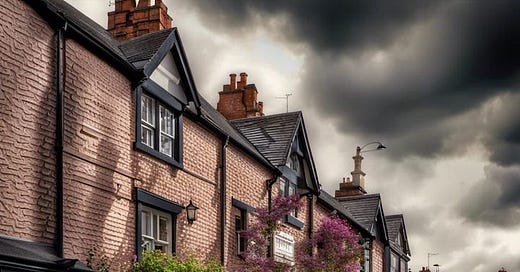What I've been reading: Key stats on local news publishing in the UK, World Press Trends report latest + creative AI story uses
When and what form local stories take according to new report, the latest World Press Trends report takeaways and very creative AI uses for local
Good afternoon,
And happy Wednesday. Here’s my latest round-up of interesting links I’ve found from across the digital journalism, journalism, communications and more landscape. A reminder, this digest pings itself into inboxes each Wednesday and is free to subscribe - so pop email in below or if you think it’s useful for someone then please do forward it on.
Let’s get cracking with a final paragraph of a piece that caught my eye.
Government research plays down BBC local news sector impact - Charlotte Tobitt - there's lots been written recently about the BBC local expansion and local commercial media response to this. A detailed study was put in place by Ofcom to look at this, and away from the rights and wrongs, the core numbers about local news publishing caught my eye.
Thursday is the day of the week most local news stories are published, with Saturday and Sunday the lowest. May and June are the months with most stories published, with April and September the lowest. These are consistent between the BBC and commercial providers.
Law enforcement/crime made up 31% of all the stories in the dataset, followed by the NHS/health/Covid-19 (24% of articles), business and the economy (13%), local government and politics (9%), educations (4%) and weather (2%). Almost a fifth (17%) of stories were classed as local interest stories such as community events or issues.
The average length of BBC articles was 355 words, while it was slightly higher (389) at commercial providers.
And on average, articles included the names of around four individuals and six quotes.
A few takeaways from that - what a weekend opportunity that is for more stories, or is that because interest in local news evaporates at weekends? There’s definitely an opportunity for more in-depth and longer-read pieces given the average length of most stories (something we’re finding with the work we’re doing with The Lead) and the good old fashioned journalism rule of multiple voices in a story clearly isn’t dead - given the plurality of quotes/individuals featured within individual stories from organisations to individuals. Heartening to see.
New World Press Trends report showcases publishers’ positive outlook amid uncertainty - World Association of News Publishers - reasons to be cheerful? In amongst print decline, inflation, economic uncertainty and more this latest look at the World Press Trends, a survey of 150+ senior news executives from publishers across the globe, puts in perspective a lot of the challenges and opportunities. 2024 will be all about continuing to develop direct and sustainable relationships with readers, while utilising AI to try and streamline workflows and editorial processes - to in my view free up journalists time to spend more time creating original journalism that helps build that direct and sustainable relationship with readers. However, ad-funded journalism will not be going away anytime soon as partly because of the disruption from major platforms like Google and Facebook the demand from advertisers to reach engaged and known audiences will only increase. This interview and podcast on Press Gazette’s The Media Explained with Reach’s Terry Hornsby is worth a listen for how they are squaring up to lots of changes within the commercial media landscape. And Kevin Anderson’s in-depth look at how local publishers in particular can re-shape as print decline hastens is also well worth your time.
Two examples of AI being used for stories - I was with the journalism innovation student cohort this week and they asked ‘how is AI actually being used for content?’ and we also talked about how AI can create images for future scenarios. It was a good question, and I referenced these two stories - one from Blog Preston on how a reader had imagined what the space in Fulwood, Preston, would look like when the Royal Preston Hospital eventually re-locates.
And this example from the Lancashire Post of what Preston would look like if Grand Theft Auto were set here! Two very imaginative uses of AI to create interesting and compelling local storytelling, and have fun too.
Next week’s digest will also include some learnings I’ve had from the WhatsApp channel we’ve set up for Blog Preston recently.
Hope these links are useful and if you ever spot anything you think I should be sharing then please do drop me a line on ed@almaonline.co.uk
Have a good weekend ahead and keep going.
Ed





Totally agree RE the weekend opportunity. I reckon it exists due to traditional low staffing at weekends. And we know tradition is a poor excuse for data-informed strategy!